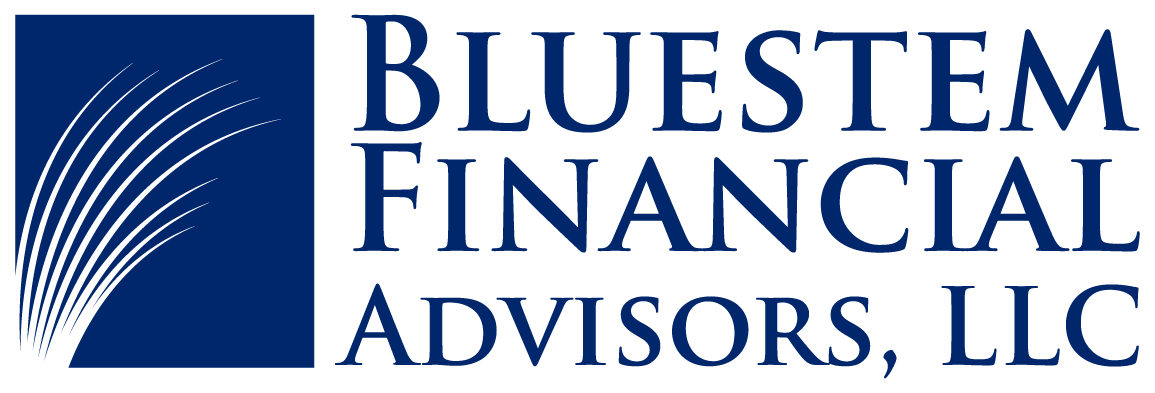Key takeaways from Happy Money: The Science of Happier Spending by Elizabeth Dunn and Michael Norton
Finances and Fertility: Exploring Options to Help Grow Your Family
Save for Later: How to Control Impulse Spending
Making Sense of Medicare IRMAA, a Universally Confusing Topic
The forename Irma is of Germanic origins and means “universe.” For many retirees, Medicare IRMAA is of universally confusing origin. In this article we’ll cut through some of the bewilderment, and hopefully leave you with a sounder understanding of IRMAA’s purpose, calculation, and planning opportunities.
Student Loan Forgiveness for University Employees
Guest Blogger: This post was written by Mary Carroll, a senior studying Financial Planning at the University of Illinois. Mary is working towards becoming a Certified Financial Planner. She serves as President of U of I’s Financial Planning Club and is currently an intern at Bluestem Financial Advisors, LLC. One of the biggest fears students have is getting a zero on an assignment. There are times however when the goal of the assignment IS to get a zero. That’s right, you may be able to zero out your student loan debt in five steps. This assignment may not be an “Easy A”– but it could save you thousands on your student loan repayment.
Before we jump into the five steps, a quick history lesson: In 2007, President Obama signed into law the Public Service Loan Forgiveness (PSLF) program to ease the overwhelming student loan burden for many entering full-time public service jobs, often at lower pay than in private sector jobs. PSLF is designed to forgive the remaining balance (and accumulated interest) on federal student loans for certain borrowers after they have made 120 qualifying payments while employed full time by certain public service employers.
There are five “Rights” to Student Loan Forgiveness to ensure you don’t get it “Wrong”:
1) The Right Loan: applies to Federal Direct Loans ONLY. Direct Loans include subsidized and unsubsidized Stafford loans, PLUS loans, and Direct Consolidation Loans. This program does not apply to any private student loans.
2) The Right Repayment Plan: You must be using one of three repayment plans that base payments on income: • Pay-As-You-Earn (PAYE) or Revised Pay-As-You-Earn (REPAYE) • Income-Based Repayment (IBR) • Income-Contingent Repayment (ICR)
3) The Right Kind of Employment: Full-time employees at Universities (that are not-for-profit) and tax-exempt organizations under section 401(c)(3), such as the University of Illinois, qualify you! “What qualifies as full-time employment?” Is a common question. The answer is an average of 30 hours per week for the year. As a teacher (or other employee) under contract for at least 8 months for the year, you meet the “full-time standard” if you work an average of at least 30 hours per week during your contractual period. Additionally, the PSLF program applies to other jobs besides University Employees. Qualifying public service employment in the government, a 501(c)(3) nonprofit organization, full-time AmeriCorps position, the Peace Corps, or a private “public service organization” qualify you as well.
4) The Right Number of Payments: Rinse, lather, and repeat 120 times (once a month for ten years). The only payments that count are payments that you have made while doing Steps 1-3 any time after October 1, 2007. This means that payments made before electing an income-based payment plan and prior to beginning public service work, won’t count toward the 120 number you need. Payments must also be made on-time (meaning no later than 15 days after their due date).
5) The Right Documentation: Show your work!! How many times do you have to tell your students that one? Show your work and turn in an employment certification form periodically to the Department of Education. They will let you know if you are on the right track to receive loan forgiveness. You don’t want to get to the end of your 120 payments only to learn you messed something up!
An added bonus point to the assignment: Typically, when a debt is forgiven the IRS includes the amount forgiven as taxable income in the tax year the loan is forgiven. However, any amount forgiven at the end of the 10 years due to the PSLF program is forgiven tax-free. This means you avoid paying federal income tax on the amount forgiven, which is an additional savings! Thank you, teacher!!
Don’t be tardy – start on these 5 steps today!
For more information check out the resources provided below.
Unsure of what type of loan you have? Visit: https://studentaid.ed.gov/sa/?login=true Income Drive Repayment Plans: https://studentaid.ed.gov/sa/repay-loans/understand/plans/income-driven Employment Certification Form: https://studentaid.ed.gov/sa/sites/default/files/public-service-employment-certification-form.pdf https://studentaid.ed.gov/sa/sites/default/files/public-service-loan-forgiveness.pdf https://studentaid.ed.gov/sa/repay-loans/forgiveness-cancellation/public-service#qualifying-payment
Kuebler Appears on WCIA's Current to Discuss Couples and Finances
This week, Bluestem’s own Jake Kuebler appeared on the WCIA 3 News program Current, where he sat down with Cynthia Bruno to discuss ways couples can successfully manage their finances. Jake provided tips to help couples be more transparent when it comes to money and their long term financial goals. Jake shared advice on several financial issues including: buying a first home, preparing for children, saving for college and cohabitating vs. marriage. Jake’s biggest advice for couples is to be intentional with their finances. He suggests that planning ahead and making solid decisions early on reduces the need for rushed decisions or limited opportunities in the future. Jake also shared his thoughts on savings, saying that couples should automatically save first and use what is left over for “fun money”. This approach helps couples achieve their goals and worry less about budgeting. We all know that financial issues can be a source of stress for couples, hopefully Jake’s optimism and helpful tips can be a positive influence on your own relationship.
You can watch the full segment below or visit the Current webpage at illinoishomepage.net.
Kuebler Appears on NewsChannel 15
This past week, NPR's Planet Money released an online tool comparing median income of various cities in relation to how far that income would go. Based on surveys by the Bureau of Economic Analysis, this tool draws on Regional Price Parity; measuring the variation in cost a basket of consumer goods would have in different locations. Especially of interest, the tool indicated residents of nearby Danville, IL see the biggest jump in "perceived" income due to the low cost of living in that area. ABC NewsChannel 15's Kim Shine sat down with our own Jacob Kuebler to discuss. You can see the full news story below.
You may also wish to see the full NPR story by following this link or the original NewsChannel 15 Story by following this link.
Planning for Rising University Tuition
This past week, the University of Illinois Trustees approved a tuition increase. News outlets immediately began reporting that the 4 year expected cost of attending the university now tops $100,000. How can parents plan for this? I was recently interviewed by Adam Rife of WICD News Channel 15 regarding how parents can plan for these changes. I offer a few points to keep in mind regarding this change. This recent announcement of $100,000 expected cost is as much a psychological barrier as an actual one. Similar to your car rolling from 99,999 miles to 100,000, the perception changes much more than the actual mechanics. However, rising costs are a troubling trend for parents planning for college education. For many years, college costs have been rising at about double the rate of increases in the cost of living.
In order to plan for the rising cost of higher education, my best advice as I told Adam is:
I think the key is always starting early, and unfortunately, starting early for most parents means you have a young child and there are a lot of other expenses coming up.
There are two important factors in saving for the future: Time and Dollars Saved. The more you have of one factor, the less you need of the other. Start early and you can save less and end up with more.
You should also keep in mind that the "Sticker Price" of college may not actually reflect the actual cost of attending college. Matching your student's skills and interests with a university or college can help them qualify for higher amounts of financial aid, scholarships and grants. In some cases, a smaller college with higher tuition may offer a more generous aid package to a desirable student than a larger public institution. We have found that College Navigator is one excellent resource for researching schools.
You can check out the full story here:
WICD NewsChannel 15 :: News - Top Stories - 4 Years Of UI Tuition To Top $100,000 For 1st Time.
A Simple Strategy to Maximize Open Enrollment
As the year draws to a close, days grow shorter, and the holiday bustle begins, there is one item many are dealing with – Open Enrollment. This is often the time of year to review and elect changes to your employer benefits for the coming year. Although this may not make your top 10 holiday task list, here is one helpful tip to maximize your election for the upcoming year: The days of employer pensions are past and today’s worker needs to take responsibility to secure a comfortable retirement. According to the National Institute of Retirement Security, Americans are doing a poor job of it. They report the median retirement account balance is only $3,000. This is nowhere near the $1-2 million figure most professionals quote as needed to ensure financial independence.
Do yourself a favor and make one small change this year. Increase your own retirement savings contribution by 1%. You will hardly notice the change. Assume you earn $40,000 per year and are paid bi-weekly. An increase of 1% in savings means saving about $15 extra per pay period. Plus, if you save to a pre-tax account such as an 401k or 403b, you will save tax. Assuming an average federal and state income tax rate of 20%, your $15 contribution will only result in a paycheck decrease of $12.00 net of tax. Would you even notice a change that small?
The chart below illustrates the power of increasing your retirement savings annually. Barney and Eric are both 30 years old earning $40,000 per year. They each have $3,000 in savings and are saving 5% of income per year. Eric increases his savings rate by 1% per year until he hits 10% annual savings at age 36. Assuming they each earn a 7% return on investments over their careers, Barney would end up with savings of $328,000 compared to Eric’s $580,000.
Even though Eric is saving more, he probably does not notice much difference in lifestyle as compared to Barney. Barney does have more discretionary income throughout his career, but he is likely spending it on goods and services that have little lasting value. Because he is used to spending more than Eric, Barney needs 5% more annual retirement income. This means he needs even more savings than Eric to maintain his lifestyle through retirement! And, if Eric continues increasing savings by 1% each year until he is 41 to achieve 15% savings, he will have $741,000 at retirement.
If you are lucky, your employer might even offer the option to automatically increase your savings each year. Choosing this election increases your retirement savings on an annual basis or when you get a pay raise. According to Nudge by Richard H. Thaler and Cass R. Sunstein, these types of automatic options in plans can help you avoid the procrastination that is so common for all of us.
Even if your employer does not automatically adjust for you, you can easily setup a reminder on your Google Calendar. Otherwise, you can hire me to be your “paid nag” and make sure you are on track to reach financial independence at your desired age!
Cutting the Cord
How I cut the cord to save over $900 annually.
I have to admit that I love new technology. Anything that makes daily tasks simpler, more convenient, or more accessible, I am on board. At the same time, early adoption of technology can clash with my general nature to be frugal, especially when new technology hardware, software and services fees begin to add up. In some cases, technology can actually save money. Coming up on my first year of kicking the cable habit, I am sharing my story of how I dropped my pay television cable services and replaced it with less expensive streaming video services.
My decision to drop my cable TV service did not come easily. I am a sucker for convenience. I expected some trauma, especially with the loss of my on demand DVR. My motivation was the continuously increasing monthly cable bill stuffed with add on fees such as the HD Technology Fee, DVR Service Fee, and Franchise Fees. After a couple weeks of adjustment, the switch was fairly smooth and I am ready to call it a success after a year.
The Math
In my last month of TV service in September of 2012, my total cable and internet bill was $135.75. My internet package became slightly more expensive with the bundling loss, now at $49.95/month. As discussed below, I added Hulu Plus service at $7.99/month but already had Netflix. This makes my total monthly savings $77.81/month or $933.72/year.
In terms of hardware, I outlayed $58 for a Roku (slightly more than current retail), $39 for an antenna and $35 for a Chromecast (which included two month of Netlfix streaming free, saving $15.98). This is a net total hardware cost of $116.02, but a payback period of less than two months.
Hardware
Making the switch required minimal outlay in new expenses, partly because I already owned some equipment already. Here is a list of what I own and what I purchased:
Sony Playstation 3 ($320): Before dropping cable, this acted as my primary DVD/Blue-ray Disc player. Paired with subscriptions, I use this to stream TV Episodes and Movies from Netflix and Hulu Plus (as discussed below). With the dual capabilities of streaming and DVD/Blue-ray, this is my primary TV hardware. I run it through my A/V Receiver, which allows for HD video and 5.1 Audio Channels. For those who might be interested, many options also have subtitles available through streaming as well. If I had not already owned this unit, I would have opted for a cheaper alternative such as the Roku (described next), Smart TV with WIFI, or DVD Player with streaming capabilities.
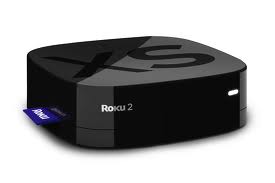 Roku ($49): For my secondary TVs, I just needed something that could stream content at a much lower cost. The Roku is an excellent choice. Much like the Playstation, you can download "apps" (Roku calls them channels) to stream subscription services such as Netflix and Hulu Plus. However, their app selection is much more extensive and adds channels such as PBS, CNN, Vudu (movies) and hundreds more. Often these channels are free, if you are willing to watch ads.
Roku ($49): For my secondary TVs, I just needed something that could stream content at a much lower cost. The Roku is an excellent choice. Much like the Playstation, you can download "apps" (Roku calls them channels) to stream subscription services such as Netflix and Hulu Plus. However, their app selection is much more extensive and adds channels such as PBS, CNN, Vudu (movies) and hundreds more. Often these channels are free, if you are willing to watch ads.
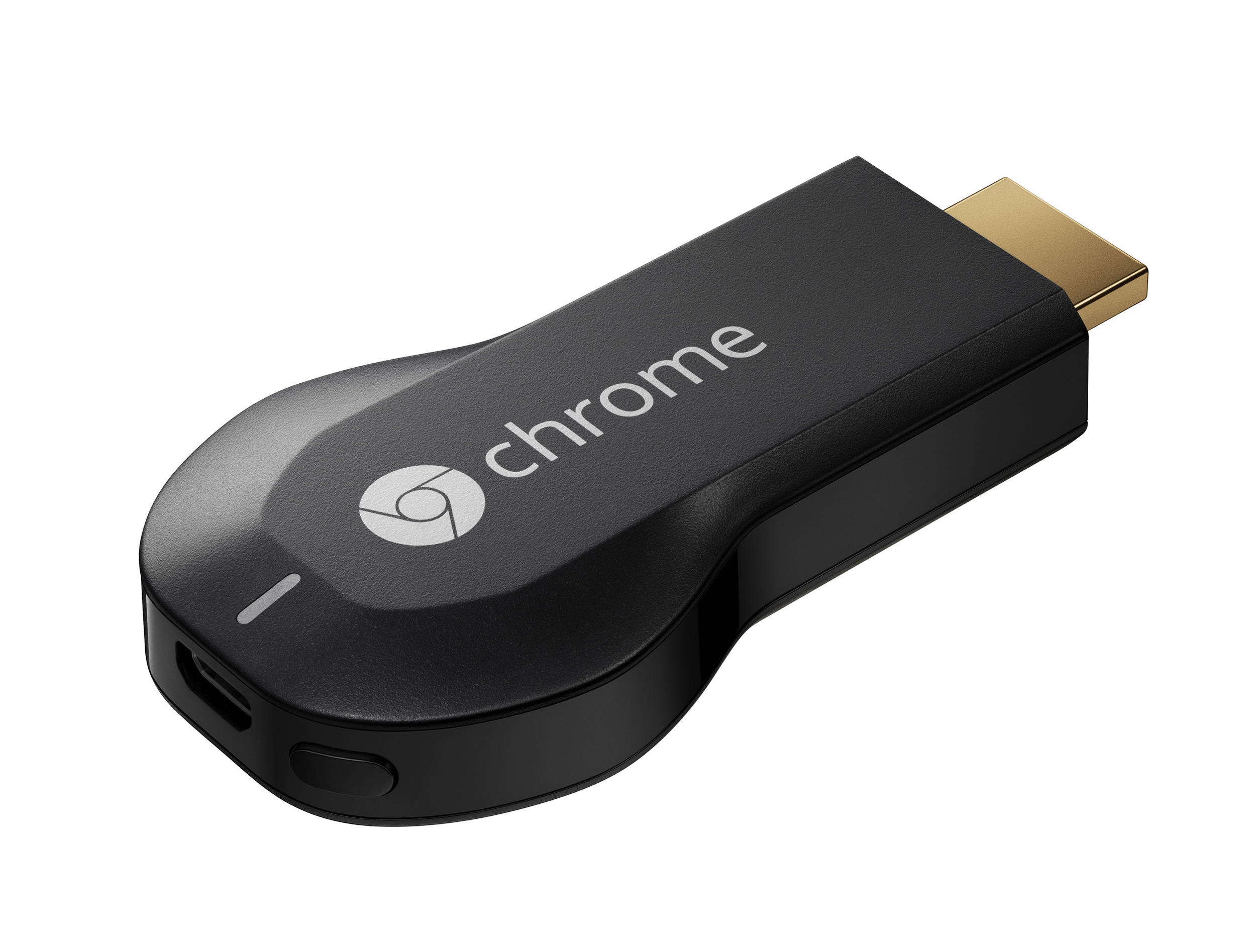 Chromecast ($35): This is my newest addition. Sometimes content I want to watch is only web-based. I previously hooked my laptop directly to the TV using an HDMI output, but this allows a similar functionality through a wireless connection. Essentially, almost any video I can stream through a browser on my phone, tablet or laptop can be "beamed" to my television wireless through this device.
Chromecast ($35): This is my newest addition. Sometimes content I want to watch is only web-based. I previously hooked my laptop directly to the TV using an HDMI output, but this allows a similar functionality through a wireless connection. Essentially, almost any video I can stream through a browser on my phone, tablet or laptop can be "beamed" to my television wireless through this device.
Antenna ($39): Of course, I cannot leave out the fact that a ton of content is available over the air through broadcast networks. With a digital signal over the air, the quality is oftentimes better than the compressed data coming through cable or online streaming. The main downside is content is limited to a broadcast schedule, which means my main use is the morning news while getting ready each morning. Choosing an antenna will depend on how far away and direction of the signal you are trying to receive. Antennaweb.org is a good website to check out when trying to determine what antenna to buy for your area.
Services
A lot of content is available online for free, but subscriptions open up more content. More importantly, subscriptions add convenience of centrally locating content and longer period of access to that content. In some cases, it will reduce advertisements and increase picture and video quality.
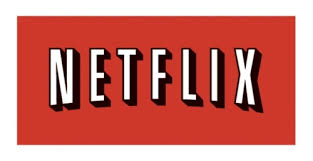 Netflix ($15.98/month): Netflix is one of the most popular streaming services. Their streaming library is impressive, boasting a huge selection of classic and fairly current movies. New movie releases will not likely be available in their library. Additionally, they have a huge library of TV Shows. For shows currently in production, you may find past seasons, but not likely to find the most current season. They have begun to offer series they produce and make available exclusively to their subscribers. I am subscribed to their DVD Services, expanding the available of shows and newly released movies. This feature can be dropped, reducing the monthly cost to $7.99/month. Note: I was already paying for this service before dropping cable, so I am not considering this as a "new" cost.
Netflix ($15.98/month): Netflix is one of the most popular streaming services. Their streaming library is impressive, boasting a huge selection of classic and fairly current movies. New movie releases will not likely be available in their library. Additionally, they have a huge library of TV Shows. For shows currently in production, you may find past seasons, but not likely to find the most current season. They have begun to offer series they produce and make available exclusively to their subscribers. I am subscribed to their DVD Services, expanding the available of shows and newly released movies. This feature can be dropped, reducing the monthly cost to $7.99/month. Note: I was already paying for this service before dropping cable, so I am not considering this as a "new" cost.
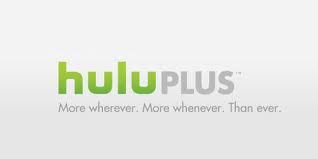 Hulu Plus ($7.99/month): Where Netflix has mastered the movie and past TV episode streaming, Hulu Plus has the newer TV shows. Generally most major broadcast TV network shows are available the day after airing as well as many cable network shows. You can access much of their content through your computer browser for free. The paid subscription service expands the library of content and allows from streaming through more devices including the Playstation and Roku discussed above. One downside is even their paid subscription includes advertisements, but their library is expanding all the time.
Hulu Plus ($7.99/month): Where Netflix has mastered the movie and past TV episode streaming, Hulu Plus has the newer TV shows. Generally most major broadcast TV network shows are available the day after airing as well as many cable network shows. You can access much of their content through your computer browser for free. The paid subscription service expands the library of content and allows from streaming through more devices including the Playstation and Roku discussed above. One downside is even their paid subscription includes advertisements, but their library is expanding all the time.
Looking for more options? There are lots of other services available, such as Amazon Prime Instant Video or buying content through services such as iTunes and Google Playstore.
Caution...
Cutting the cord is not for everyone. Sports fans might be weary as a lot of content will not be available through streaming services. Additionally, Luddites (technology haters) may not enjoy the learning curves of making the switch. Watch out if you have restrictions on your internet service. Those on cell networks will want to be aware of their data caps. It is not unheard of to use 80+ Gigabytes of data in a month by just streaming at home. You will also need a reliable internet connection with at least 5-7 Megabits/Second of bandwidth.
The technology is constantly getting better, so be sure to thank an early adopter for clearing a path to convenience and cost savings for the rest of us. Feel free to comment below if you have questions or strategies I have not mentioned.
